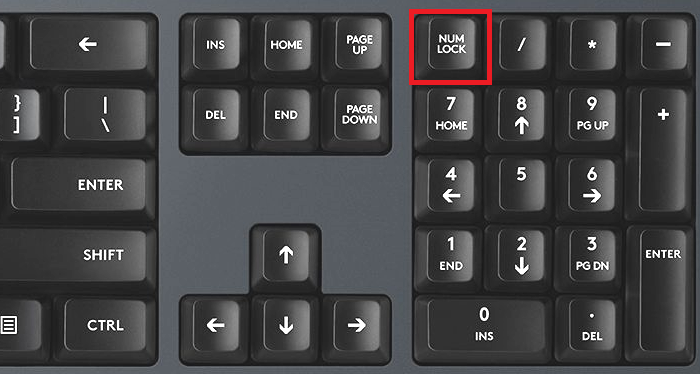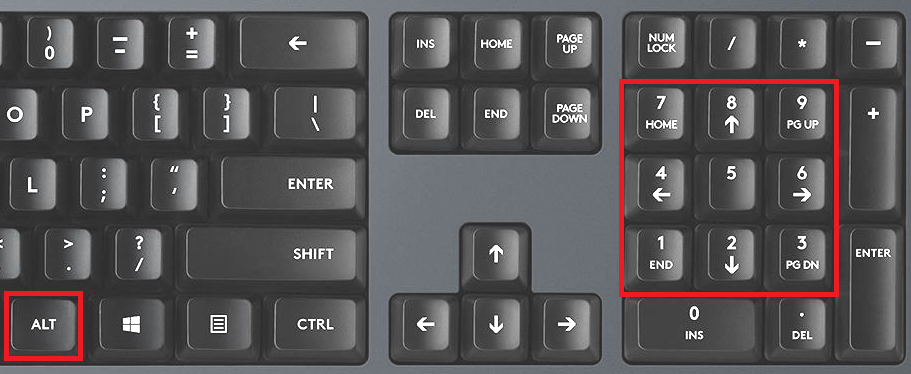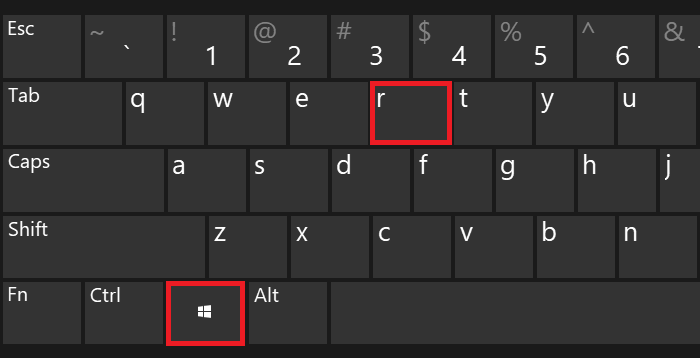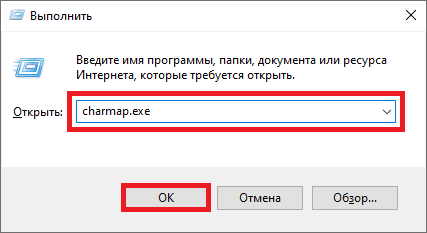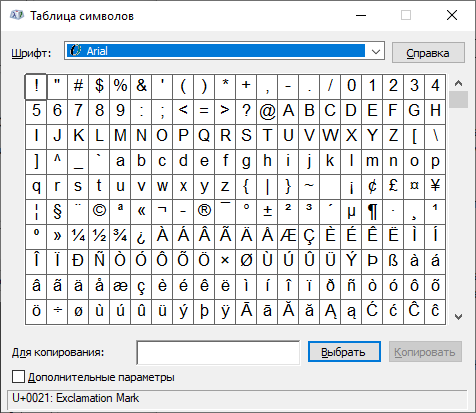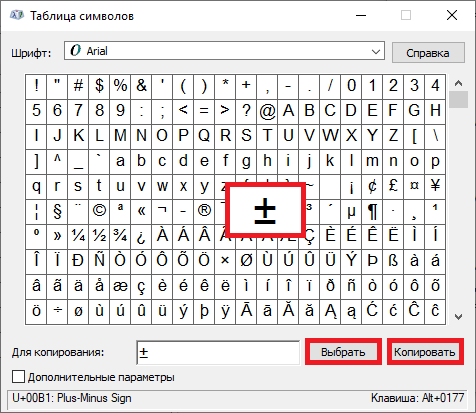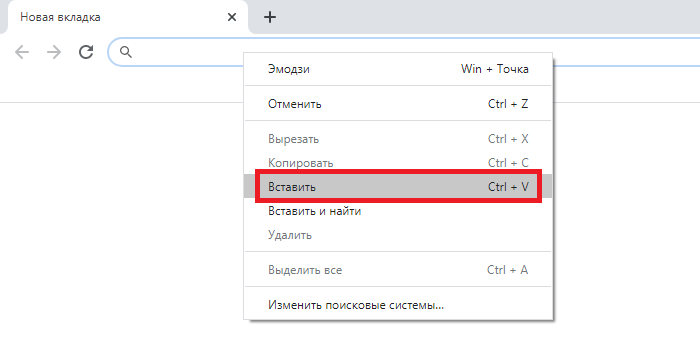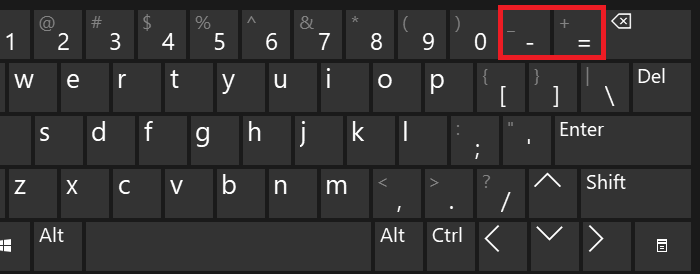− Минус
вычесть
Нажмите, чтобы скопировать и вставить символ
Значение символа
Знак минус – используется для изображения математической операции вычитания и для обозначения отрицательных чисел. На латинском «minus» значит – меньше.
Ранее, вместо знака минус (и вместо тире) использовался дефис. Теперь в Юникоде есть отличающиеся знаки для всех символов: дефис ‐, минус −, тире —.
Символ минус находится в разделе
Математические операторы 2200–22FF
. Прочие математические операторы можно найти в разделах
основная латиница 0000–007F
и
дополнительные математические операторы 2A00–2AFF
.
Символ «Минус» был утвержден как часть Юникода версии 1.1 в 1993 г.
Свойства
| Версия | 1.1 |
| Блок | Математические операторы |
| Тип парной зеркальной скобки (bidi) | Нет |
| Композиционное исключение | Нет |
| Изменение регистра | 2212 |
| Простое изменение регистра | 2212 |
Кодировка
| Кодировка | hex | dec (bytes) | dec | binary |
|---|---|---|---|---|
| UTF-8 | E2 88 92 | 226 136 146 | 14846098 | 11100010 10001000 10010010 |
| UTF-16BE | 22 12 | 34 18 | 8722 | 00100010 00010010 |
| UTF-16LE | 12 22 | 18 34 | 4642 | 00010010 00100010 |
| UTF-32BE | 00 00 22 12 | 0 0 34 18 | 8722 | 00000000 00000000 00100010 00010010 |
| UTF-32LE | 12 22 00 00 | 18 34 0 0 | 304218112 | 00010010 00100010 00000000 00000000 |
| + − | |
|---|---|
|
Plus and minus signs |
|
| In Unicode | U+002B + PLUS SIGN (+) U+2212 − MINUS SIGN (−) |
| Different from | |
| Different from | U+002D — HYPHEN-MINUS U+2010 ‐ HYPHEN (many) — Dash |
| Related | |
| See also | U+00B1 ± PLUS-MINUS SIGN U+2213 ∓ MINUS-OR-PLUS SIGN U+2052 ⁒ COMMERCIAL MINUS SIGN |
The plus and minus signs, + and −, are mathematical symbols used to represent the notions of positive and negative, respectively. In addition, + represents the operation of addition, which results in a sum, while − represents subtraction, resulting in a difference.[1] Their use has been extended to many other meanings, more or less analogous. Plus and minus are Latin terms meaning «more» and «less», respectively.
History[edit]
Though the signs now seem as familiar as the alphabet or the Hindu-Arabic numerals, they are not of great antiquity. The Egyptian hieroglyphic sign for addition, for example, resembled a pair of legs walking in the direction in which the text was written (Egyptian could be written either from right to left or left to right), with the reverse sign indicating subtraction:[2]
Nicole Oresme’s manuscripts from the 14th century show what may be one of the earliest uses of + as a sign for plus.[3]
In early 15th century Europe, the letters «P» and «M» were generally used.[4][5]
The symbols (P with overline, p̄, for più (more), i.e., plus, and M with overline, m̄, for meno (less), i.e., minus) appeared for the first time in Luca Pacioli’s mathematics compendium, Summa de arithmetica, geometria, proportioni et proportionalità, first printed and published in Venice in 1494.[6]
The + sign is a simplification of the Latin: et (comparable to the evolution of the ampersand &).[7] The − may be derived from a tilde written over ⟨m⟩ when used to indicate subtraction; or it may come from a shorthand version of the letter ⟨m⟩ itself.[8]
In his 1489 treatise, Johannes Widmann referred to the symbols − and + as minus and mer (Modern German mehr; «more»): «[…] was − ist das ist minus […] und das + das ist mer das zu addirst»[9][10][11] They weren’t used for addition and subtraction in the treatise, but were used to indicate surplus and deficit; usage in the modern sense is attested in a 1518 book by Henricus Grammateus.[12][13]
Robert Recorde, the designer of the equals sign, introduced plus and minus to Britain in 1557 in The Whetstone of Witte:[14] «There be other 2 signes in often use of which the first is made thus + and betokeneth more: the other is thus made − and betokeneth lesse.»
Plus sign[edit]
The plus sign, +, is a binary operator that indicates addition, as in 2 + 3 = 5. It can also serve as a unary operator that leaves its operand unchanged (+x means the same as x). This notation may be used when it is desired to emphasize the positiveness of a number, especially in contrast with the negative numbers (+5 versus −5).
The plus sign can also indicate many other operations, depending on the mathematical system under consideration. Many algebraic structures, such as vector spaces and matrix rings, have some operation which is called, or is equivalent to, addition. It is though conventional to use the plus sign to only denote commutative operations.[15]
The symbol is also used in chemistry and physics. For more, see § Other uses.
Minus sign[edit]
The minus sign, −, has three main uses in mathematics:[16]
- The subtraction operator: a binary operator to indicate the operation of subtraction, as in 5 − 3 = 2. Subtraction is the inverse of addition.[1]
- The function whose value for any real or complex argument is the additive inverse of that argument. For example, if x = 3, then −x = −3, but if x = −3, then −x = +3. Similarly, −(−x) = x.
- A prefix of a numeric constant. When it is placed immediately before an unsigned numeral, the combination names a negative number, the additive inverse of the positive number that the numeral would otherwise name. In this usage, ‘−5‘ names a number the same way ‘semicircle’ names a geometric figure, with the caveat that ‘semi’ does not have a separate use as a function name.
In many contexts, it does not matter whether the second or the third of these usages is intended: −5 is the same number. When it is important to distinguish them, a raised minus sign ¯ is sometimes used for negative constants, as in elementary education, the programming language APL, and some early graphing calculators.[a]
All three uses can be referred to as «minus» in everyday speech, though the binary operator is sometimes read as «take away».[17] In American English nowadays, −5 (for example) is generally referred to as «negative five» though speakers born before 1950 often refer to it as «minus five». (Temperatures tend to follow the older usage; −5° is generally called «minus five degrees».)[18] Further, a few textbooks in the United States encourage −x to be read as «the opposite of x» or «the additive inverse of x«—to avoid giving the impression that −x is necessarily negative (since x itself may already be negative).[19]
In mathematics and most programming languages, the rules for the order of operations mean that −52 is equal to −25: Exponentiation binds more strongly than the unary minus, which binds more strongly than multiplication or division. However, in some programming languages (Microsoft Excel in particular), unary operators bind strongest, so in those cases −5^2 is 25, but 0−5^2 is −25.[20]
Similar to the plus sign, the minus sign is also used in chemistry and physics. For more, see § Other uses below.
Use in elementary education [edit]
Some elementary teachers use raised plus and minus signs before numbers to show they are positive or negative numbers.[citation needed] For example, subtracting −5 from 3 might be read as «positive three take away negative 5», and be shown as
- 3 − −5 becomes 3 + 5 = 8,
or even as
- +3 − −5 becomes +3 + +5 = +8.
Use as a qualifier[edit]
In grading systems (such as examination marks), the plus sign indicates a grade one level higher and the minus sign a grade lower. For example, B− («B minus») is one grade lower than B. In some occasions, this is extended to two plus or minus signs (e.g., A++ being two grades higher than A).
Positive and negative are sometimes abbreviated as +ve and −ve.[21]
Mathematics[edit]
In mathematics the one-sided limit x → a+ means x approaches a from the right (i.e., right-sided limit), and x → a− means x approaches a from the left (i.e., left-sided limit). For example, 1/x → +

Blood[edit]
Blood types are often qualified with a plus or minus to indicate the presence or absence of the Rh factor. For example, A+ means type A blood with the Rh factor present, while B− means type B blood with the Rh factor absent.
Music[edit]
In music, augmented chords are symbolized with a plus sign, although this practice is not universal (as there are other methods for spelling those chords). For example, «C+» is read «C augmented chord». Sometimes the plus is written as a superscript.
Uses in computing[edit]
As well as the normal mathematical usage, plus and minus signs may be used for a number of other purposes in computing.
Plus and minus signs are often used in tree view on a computer screen—to show if a folder is collapsed or not.
In some programming languages, concatenation of strings is written "a" + "b", and results in "ab".
In most programming languages, subtraction and negation are indicated with the ASCII hyphen-minus character, -. In APL a raised minus sign (Unicode U+00AF) is used to denote a negative number, as in ¯3. While in J a negative number is denoted by an underscore, as in _5.
In C and some other computer programming languages, two plus signs indicate the increment operator and two minus signs a decrement; the position of the operator before or after the variable indicates whether the new or old value is read from it. For example, if x equals 6, then y = x++ increments x to 7 but sets y to 6, whereas y = ++x would set both x and y to 7. By extension, ++ is sometimes used in computing terminology to signify an improvement, as in the name of the language C++.
In regular expressions, + is often used to indicate «1 or more» in a pattern to be matched. For example, x+ means «one or more of the letter x».
There is no concept of negative zero in mathematics, but in computing −0 may have a separate representation from zero. In the IEEE floating-point standard, 1 / −0 is negative infinity (

Other uses[edit]
In physics, the use of plus and minus signs for different electrical charges was introduced by Georg Christoph Lichtenberg.
In chemistry, superscripted plus and minus signs are used to indicate an ion with a positive or negative charge of 1 (e.g., NH+
4 ). If the charge is greater than 1, a number indicating the charge is written before the sign (as in SO2−
4 ). The minus sign is also used, in place of an en dash, for a single covalent bond between two atoms as in the skeletal formula.[citation needed]
In the International Phonetic Alphabet, subscripted plus and minus signs are used as diacritics to indicate advanced or retracted articulations of speech sounds.
The minus sign is also used as tone letter in the orthographies of Dan, Krumen, Karaboro, Mwan, Wan, Yaouré, Wè, Nyabwa and Godié.[22] The Unicode character used for the tone letter (U+02D7) is different from the mathematical minus sign.
The plus sign sometimes represents /ɨ/ in the orthography of Huichol.[23]
In the algebraic notation used to record games of chess, the plus sign + is used to denote a move that puts the opponent into check, while a double plus ++ is sometimes used to denote double check. Combinations of the plus and minus signs are used to evaluate a move (+/−, +/=, =/+, −/+).
In linguistics, a superscript plus + sometimes replaces the asterisk, which denotes unattested linguistic reconstruction.
In botanical names, a plus sign denotes graft-chimaera.
A plus sign written at the beginning of an international phone number is the «international prefix symbol» that «serves to remind the subscriber to dial the international prefix which differs from country to country and also serves to identify the number following as the international telephone number.»[24]
Character codes[edit]
| — + − |
|---|
|
hyphen-minus, plus, minus signs compared |
| Read | Character | Unicode | ASCII | in URL | HTML notations |
|---|---|---|---|---|---|
| Plus | + | U+002B | 43dec, 2Bhex | %2B |
+, +
|
| Minus | − | U+2212 | %E2%88%92 |
− − −
|
|
| Hyphen-minus | — | U+002D | 45dec, 2Dhex | %2D |
-
|
| Small Hyphen-minus | ﹣ | U+FE63 | %EF%B9%A3 |
﹣ ﹣
|
|
| Full-width Plus | + | U+FF0B | %EF%BC%8B |
+ +
|
|
| Full-width Hyphen-minus | - | U+FF0D | %EF%BC%8D |
- -
|
The hyphen-minus sign, —, is the original ASCII version of the minus sign, which doubles as a hyphen. It is usually shorter in length than the plus sign and often at a different height to the plus-sign’s cross bar. It can be used as a substitute for the true minus sign when the character set is limited to ASCII. Most programming languages and other computer readable languages do this, since ASCII is generally available as a subset of most character encodings, while U+2212 is a Unicode feature only. Also several other software programs usable for calculations don’t accept the U+2212 minus. For example, pasting =3−2 into Excel or 3−2= into the Windows calculator won’t work.
As the true minus is not available on most keyboard layouts, typographers sometimes use the very similar en dash, U+2013, to represent the minus sign although it is «not preferred» in mathematical typesetting.[25] Ways of producing the en dash are available on most computers; see Dash § Typing the characters.
Alternative minus signs[edit]
There is a commercial minus sign, ⁒, which is used in Germany and Scandinavia. The symbol ÷ is used to denote subtraction in Scandinavia.[26]
Alternative plus sign[edit]
A Jewish tradition that dates from at least the 19th century is to write plus using the symbol ﬩.[27] This practice was adopted into Israeli schools and is still commonplace today in elementary schools (including secular schools) but in fewer secondary schools.[28] It is also used occasionally in books by religious authors, but most books for adults use the international symbol +. The reason for this practice is that it avoids the writing of a symbol + that looks like a Christian cross.[27][28] Unicode has this symbol at position U+FB29 ﬩ HEBREW LETTER ALTERNATIVE PLUS SIGN.[29]
See also[edit]
- En dash, a dash that looks similar to the subtraction symbol but is used for different purposes
- Plus–minus sign ±
- Glossary of mathematical symbols
- ⊕ (disambiguation)
References and footnotes[edit]
- ^ at least the early Texas Instruments models, including the TI-81 and TI-82
- ^ a b Weisstein, Eric W. «Subtraction». mathworld.wolfram.com. Retrieved 2020-08-26.
- ^
Karpinski, Louis C. (1917). «Algebraical Developments Among the Egyptians and Babylonians». The American Mathematical Monthly. 24 (6): 257–265. doi:10.2307/2973180. JSTOR 2973180. MR 1518824. - ^ The birth of symbols – Zdena Lustigova, Faculty of Mathematics and Physics Charles University, Prague Archived 2013-07-08 at archive.today
- ^ Ley, Willy (April 1965). «Symbolically Speaking». For Your Information. Galaxy Science Fiction. pp. 57–67.
- ^ Stallings, Lynn (May 2000). «A brief history of algebraic notation». School Science and Mathematics. 100 (5): 230–235. doi:10.1111/j.1949-8594.2000.tb17262.x. Retrieved 13 April 2009.
- ^ Sangster, Alan; Stoner, Greg; McCarthy, Patricia (2008). «The market for Luca Pacioli’s Summa Arithmetica» (PDF). Accounting Historians Journal. 35 (1): 111–134 [p. 115]. doi:10.2308/0148-4184.35.1.111.
- ^ Cajori, Florian (1928). «Origin and meanings of the signs + and -«. A History of Mathematical Notations, Vol. 1. The Open Court Company, Publishers.
- ^ Wright, D. Franklin; New, Bill D. (2000). Intermediate Algebra (4th ed.). Thomson Learning. p. 1.
The minus sign or bar, — , is thought to be derived from the habit of early scribes of using a bar to represent the letter m
- ^ a b Widmann, Johannes (1489). «Behe[n]de vnd hubsche Rechenung auff allen kauffmanschafft». Leipzig : Konrad Kachelofen. p. 176.
- ^ a b Widmann, Johannes (1508). «Behend vnd hüpsch Rechnung vff allen Kauffmanschafften». Kolophon: Gedruck zů Pfhortzheim von Thoman Anßhelm. p. 122.
- ^ «plus». Oxford English Dictionary (Online ed.). Oxford University Press. (Subscription or participating institution membership required.)
- ^ Smith, D.E. (1951). History of Mathematics. Vol. 1. Courier Dover Publications. pp. 258, 330. ISBN 0486204308.
- ^ Earliest Uses of Symbols of Operation
- ^ Cajori, Florian (2007), A History of Mathematical Notations, Cosimo, p. 164, ISBN 9781602066847.
- ^ Fraleigh, John B. (1989). A First Course in Abstract Algebra (4 ed.). United States: Addison-Wesley. p. 52. ISBN 0-201-52821-5.
- ^ Henri Picciotto (1990). The Algebra Lab. Creative Publications. p. 9. ISBN 978-0-88488-964-9.
- ^ «Subtraction». www.mathsisfun.com. Retrieved 2020-08-26.
- ^ Schwartzman, Steven (1994). The words of mathematics. The Mathematical Association of America. p. 136. ISBN 9780883855119.
- ^ Wheeler, Ruric E. (2001). Modern Mathematics (11 ed.). p. 171.
- ^ «Microsoft Office Excel Calculation operators and precedence». Archived from the original on 2009-08-11. Retrieved 2009-07-29.
- ^ Castledine, George; Close, Ann (2009). Oxford Handbook of Adult Nursing. Oxford University Press. p. xvii. ISBN 9780191039676..
- ^ Hartell, Rhonda L., ed. (1993), The Alphabets of Africa. Dakar: UNESCO and SIL.
- ^ Biglow, Brad Morris (2001). Ethno-Nationalist Politics and Cultural Preservation: Education and Bordered Identities Among the Wixaritari (Huichol) of Tateikita, Jalisco, Mexico (PDF) (PhD). University of Florida. p. 284.
- ^ International Telecommunication Union, Recommendation E.123, Notation for national and international telephone numbers, e-mail addresses and Web addresses.
- ^ «The Unicode Standard, Version 13.0, Chapter 6.2» (PDF). 2020. General Punctuation § Dashes and Hyphens.
- ^ «6. Writing Systems and Punctuation». The Unicode Standard: Version 10.0 – Core Specification (PDF). Unicode Consortium. June 2017. p. 280, Obelus.
- ^ a b Kaufmann Kohler (1901–1906). «Cross». In Cyrus Adler; et al. (eds.). Jewish Encyclopedia.
- ^ a b Christian-Jewish Dialogue: Theological Foundations By Peter von der Osten-Sacken (1986 – Fortress Press) ISBN 0-8006-0771-6 «In Israel the plus sign used in mathematics is represented by a horizontal stroke with a vertical hook instead of the sign otherwise used all over the world, because the latter is reminiscent of a cross.» (Page 96)
- ^ Unicode U+FB29 reference page This form of the plus sign is also used on the control buttons at individual seats on board the El Al Israel Airlines aircraft.
External links[edit]
| + − | |
|---|---|
|
Plus and minus signs |
|
| In Unicode | U+002B + PLUS SIGN (+) U+2212 − MINUS SIGN (−) |
| Different from | |
| Different from | U+002D — HYPHEN-MINUS U+2010 ‐ HYPHEN (many) — Dash |
| Related | |
| See also | U+00B1 ± PLUS-MINUS SIGN U+2213 ∓ MINUS-OR-PLUS SIGN U+2052 ⁒ COMMERCIAL MINUS SIGN |
The plus and minus signs, + and −, are mathematical symbols used to represent the notions of positive and negative, respectively. In addition, + represents the operation of addition, which results in a sum, while − represents subtraction, resulting in a difference.[1] Their use has been extended to many other meanings, more or less analogous. Plus and minus are Latin terms meaning «more» and «less», respectively.
History[edit]
Though the signs now seem as familiar as the alphabet or the Hindu-Arabic numerals, they are not of great antiquity. The Egyptian hieroglyphic sign for addition, for example, resembled a pair of legs walking in the direction in which the text was written (Egyptian could be written either from right to left or left to right), with the reverse sign indicating subtraction:[2]
Nicole Oresme’s manuscripts from the 14th century show what may be one of the earliest uses of + as a sign for plus.[3]
In early 15th century Europe, the letters «P» and «M» were generally used.[4][5]
The symbols (P with overline, p̄, for più (more), i.e., plus, and M with overline, m̄, for meno (less), i.e., minus) appeared for the first time in Luca Pacioli’s mathematics compendium, Summa de arithmetica, geometria, proportioni et proportionalità, first printed and published in Venice in 1494.[6]
The + sign is a simplification of the Latin: et (comparable to the evolution of the ampersand &).[7] The − may be derived from a tilde written over ⟨m⟩ when used to indicate subtraction; or it may come from a shorthand version of the letter ⟨m⟩ itself.[8]
In his 1489 treatise, Johannes Widmann referred to the symbols − and + as minus and mer (Modern German mehr; «more»): «[…] was − ist das ist minus […] und das + das ist mer das zu addirst»[9][10][11] They weren’t used for addition and subtraction in the treatise, but were used to indicate surplus and deficit; usage in the modern sense is attested in a 1518 book by Henricus Grammateus.[12][13]
Robert Recorde, the designer of the equals sign, introduced plus and minus to Britain in 1557 in The Whetstone of Witte:[14] «There be other 2 signes in often use of which the first is made thus + and betokeneth more: the other is thus made − and betokeneth lesse.»
Plus sign[edit]
The plus sign, +, is a binary operator that indicates addition, as in 2 + 3 = 5. It can also serve as a unary operator that leaves its operand unchanged (+x means the same as x). This notation may be used when it is desired to emphasize the positiveness of a number, especially in contrast with the negative numbers (+5 versus −5).
The plus sign can also indicate many other operations, depending on the mathematical system under consideration. Many algebraic structures, such as vector spaces and matrix rings, have some operation which is called, or is equivalent to, addition. It is though conventional to use the plus sign to only denote commutative operations.[15]
The symbol is also used in chemistry and physics. For more, see § Other uses.
Minus sign[edit]
The minus sign, −, has three main uses in mathematics:[16]
- The subtraction operator: a binary operator to indicate the operation of subtraction, as in 5 − 3 = 2. Subtraction is the inverse of addition.[1]
- The function whose value for any real or complex argument is the additive inverse of that argument. For example, if x = 3, then −x = −3, but if x = −3, then −x = +3. Similarly, −(−x) = x.
- A prefix of a numeric constant. When it is placed immediately before an unsigned numeral, the combination names a negative number, the additive inverse of the positive number that the numeral would otherwise name. In this usage, ‘−5‘ names a number the same way ‘semicircle’ names a geometric figure, with the caveat that ‘semi’ does not have a separate use as a function name.
In many contexts, it does not matter whether the second or the third of these usages is intended: −5 is the same number. When it is important to distinguish them, a raised minus sign ¯ is sometimes used for negative constants, as in elementary education, the programming language APL, and some early graphing calculators.[a]
All three uses can be referred to as «minus» in everyday speech, though the binary operator is sometimes read as «take away».[17] In American English nowadays, −5 (for example) is generally referred to as «negative five» though speakers born before 1950 often refer to it as «minus five». (Temperatures tend to follow the older usage; −5° is generally called «minus five degrees».)[18] Further, a few textbooks in the United States encourage −x to be read as «the opposite of x» or «the additive inverse of x«—to avoid giving the impression that −x is necessarily negative (since x itself may already be negative).[19]
In mathematics and most programming languages, the rules for the order of operations mean that −52 is equal to −25: Exponentiation binds more strongly than the unary minus, which binds more strongly than multiplication or division. However, in some programming languages (Microsoft Excel in particular), unary operators bind strongest, so in those cases −5^2 is 25, but 0−5^2 is −25.[20]
Similar to the plus sign, the minus sign is also used in chemistry and physics. For more, see § Other uses below.
Use in elementary education [edit]
Some elementary teachers use raised plus and minus signs before numbers to show they are positive or negative numbers.[citation needed] For example, subtracting −5 from 3 might be read as «positive three take away negative 5», and be shown as
- 3 − −5 becomes 3 + 5 = 8,
or even as
- +3 − −5 becomes +3 + +5 = +8.
Use as a qualifier[edit]
In grading systems (such as examination marks), the plus sign indicates a grade one level higher and the minus sign a grade lower. For example, B− («B minus») is one grade lower than B. In some occasions, this is extended to two plus or minus signs (e.g., A++ being two grades higher than A).
Positive and negative are sometimes abbreviated as +ve and −ve.[21]
Mathematics[edit]
In mathematics the one-sided limit x → a+ means x approaches a from the right (i.e., right-sided limit), and x → a− means x approaches a from the left (i.e., left-sided limit). For example, 1/x → +

Blood[edit]
Blood types are often qualified with a plus or minus to indicate the presence or absence of the Rh factor. For example, A+ means type A blood with the Rh factor present, while B− means type B blood with the Rh factor absent.
Music[edit]
In music, augmented chords are symbolized with a plus sign, although this practice is not universal (as there are other methods for spelling those chords). For example, «C+» is read «C augmented chord». Sometimes the plus is written as a superscript.
Uses in computing[edit]
As well as the normal mathematical usage, plus and minus signs may be used for a number of other purposes in computing.
Plus and minus signs are often used in tree view on a computer screen—to show if a folder is collapsed or not.
In some programming languages, concatenation of strings is written "a" + "b", and results in "ab".
In most programming languages, subtraction and negation are indicated with the ASCII hyphen-minus character, -. In APL a raised minus sign (Unicode U+00AF) is used to denote a negative number, as in ¯3. While in J a negative number is denoted by an underscore, as in _5.
In C and some other computer programming languages, two plus signs indicate the increment operator and two minus signs a decrement; the position of the operator before or after the variable indicates whether the new or old value is read from it. For example, if x equals 6, then y = x++ increments x to 7 but sets y to 6, whereas y = ++x would set both x and y to 7. By extension, ++ is sometimes used in computing terminology to signify an improvement, as in the name of the language C++.
In regular expressions, + is often used to indicate «1 or more» in a pattern to be matched. For example, x+ means «one or more of the letter x».
There is no concept of negative zero in mathematics, but in computing −0 may have a separate representation from zero. In the IEEE floating-point standard, 1 / −0 is negative infinity (

Other uses[edit]
In physics, the use of plus and minus signs for different electrical charges was introduced by Georg Christoph Lichtenberg.
In chemistry, superscripted plus and minus signs are used to indicate an ion with a positive or negative charge of 1 (e.g., NH+
4 ). If the charge is greater than 1, a number indicating the charge is written before the sign (as in SO2−
4 ). The minus sign is also used, in place of an en dash, for a single covalent bond between two atoms as in the skeletal formula.[citation needed]
In the International Phonetic Alphabet, subscripted plus and minus signs are used as diacritics to indicate advanced or retracted articulations of speech sounds.
The minus sign is also used as tone letter in the orthographies of Dan, Krumen, Karaboro, Mwan, Wan, Yaouré, Wè, Nyabwa and Godié.[22] The Unicode character used for the tone letter (U+02D7) is different from the mathematical minus sign.
The plus sign sometimes represents /ɨ/ in the orthography of Huichol.[23]
In the algebraic notation used to record games of chess, the plus sign + is used to denote a move that puts the opponent into check, while a double plus ++ is sometimes used to denote double check. Combinations of the plus and minus signs are used to evaluate a move (+/−, +/=, =/+, −/+).
In linguistics, a superscript plus + sometimes replaces the asterisk, which denotes unattested linguistic reconstruction.
In botanical names, a plus sign denotes graft-chimaera.
A plus sign written at the beginning of an international phone number is the «international prefix symbol» that «serves to remind the subscriber to dial the international prefix which differs from country to country and also serves to identify the number following as the international telephone number.»[24]
Character codes[edit]
| — + − |
|---|
|
hyphen-minus, plus, minus signs compared |
| Read | Character | Unicode | ASCII | in URL | HTML notations |
|---|---|---|---|---|---|
| Plus | + | U+002B | 43dec, 2Bhex | %2B |
+, +
|
| Minus | − | U+2212 | %E2%88%92 |
− − −
|
|
| Hyphen-minus | — | U+002D | 45dec, 2Dhex | %2D |
-
|
| Small Hyphen-minus | ﹣ | U+FE63 | %EF%B9%A3 |
﹣ ﹣
|
|
| Full-width Plus | + | U+FF0B | %EF%BC%8B |
+ +
|
|
| Full-width Hyphen-minus | - | U+FF0D | %EF%BC%8D |
- -
|
The hyphen-minus sign, —, is the original ASCII version of the minus sign, which doubles as a hyphen. It is usually shorter in length than the plus sign and often at a different height to the plus-sign’s cross bar. It can be used as a substitute for the true minus sign when the character set is limited to ASCII. Most programming languages and other computer readable languages do this, since ASCII is generally available as a subset of most character encodings, while U+2212 is a Unicode feature only. Also several other software programs usable for calculations don’t accept the U+2212 minus. For example, pasting =3−2 into Excel or 3−2= into the Windows calculator won’t work.
As the true minus is not available on most keyboard layouts, typographers sometimes use the very similar en dash, U+2013, to represent the minus sign although it is «not preferred» in mathematical typesetting.[25] Ways of producing the en dash are available on most computers; see Dash § Typing the characters.
Alternative minus signs[edit]
There is a commercial minus sign, ⁒, which is used in Germany and Scandinavia. The symbol ÷ is used to denote subtraction in Scandinavia.[26]
Alternative plus sign[edit]
A Jewish tradition that dates from at least the 19th century is to write plus using the symbol ﬩.[27] This practice was adopted into Israeli schools and is still commonplace today in elementary schools (including secular schools) but in fewer secondary schools.[28] It is also used occasionally in books by religious authors, but most books for adults use the international symbol +. The reason for this practice is that it avoids the writing of a symbol + that looks like a Christian cross.[27][28] Unicode has this symbol at position U+FB29 ﬩ HEBREW LETTER ALTERNATIVE PLUS SIGN.[29]
See also[edit]
- En dash, a dash that looks similar to the subtraction symbol but is used for different purposes
- Plus–minus sign ±
- Glossary of mathematical symbols
- ⊕ (disambiguation)
References and footnotes[edit]
- ^ at least the early Texas Instruments models, including the TI-81 and TI-82
- ^ a b Weisstein, Eric W. «Subtraction». mathworld.wolfram.com. Retrieved 2020-08-26.
- ^
Karpinski, Louis C. (1917). «Algebraical Developments Among the Egyptians and Babylonians». The American Mathematical Monthly. 24 (6): 257–265. doi:10.2307/2973180. JSTOR 2973180. MR 1518824. - ^ The birth of symbols – Zdena Lustigova, Faculty of Mathematics and Physics Charles University, Prague Archived 2013-07-08 at archive.today
- ^ Ley, Willy (April 1965). «Symbolically Speaking». For Your Information. Galaxy Science Fiction. pp. 57–67.
- ^ Stallings, Lynn (May 2000). «A brief history of algebraic notation». School Science and Mathematics. 100 (5): 230–235. doi:10.1111/j.1949-8594.2000.tb17262.x. Retrieved 13 April 2009.
- ^ Sangster, Alan; Stoner, Greg; McCarthy, Patricia (2008). «The market for Luca Pacioli’s Summa Arithmetica» (PDF). Accounting Historians Journal. 35 (1): 111–134 [p. 115]. doi:10.2308/0148-4184.35.1.111.
- ^ Cajori, Florian (1928). «Origin and meanings of the signs + and -«. A History of Mathematical Notations, Vol. 1. The Open Court Company, Publishers.
- ^ Wright, D. Franklin; New, Bill D. (2000). Intermediate Algebra (4th ed.). Thomson Learning. p. 1.
The minus sign or bar, — , is thought to be derived from the habit of early scribes of using a bar to represent the letter m
- ^ a b Widmann, Johannes (1489). «Behe[n]de vnd hubsche Rechenung auff allen kauffmanschafft». Leipzig : Konrad Kachelofen. p. 176.
- ^ a b Widmann, Johannes (1508). «Behend vnd hüpsch Rechnung vff allen Kauffmanschafften». Kolophon: Gedruck zů Pfhortzheim von Thoman Anßhelm. p. 122.
- ^ «plus». Oxford English Dictionary (Online ed.). Oxford University Press. (Subscription or participating institution membership required.)
- ^ Smith, D.E. (1951). History of Mathematics. Vol. 1. Courier Dover Publications. pp. 258, 330. ISBN 0486204308.
- ^ Earliest Uses of Symbols of Operation
- ^ Cajori, Florian (2007), A History of Mathematical Notations, Cosimo, p. 164, ISBN 9781602066847.
- ^ Fraleigh, John B. (1989). A First Course in Abstract Algebra (4 ed.). United States: Addison-Wesley. p. 52. ISBN 0-201-52821-5.
- ^ Henri Picciotto (1990). The Algebra Lab. Creative Publications. p. 9. ISBN 978-0-88488-964-9.
- ^ «Subtraction». www.mathsisfun.com. Retrieved 2020-08-26.
- ^ Schwartzman, Steven (1994). The words of mathematics. The Mathematical Association of America. p. 136. ISBN 9780883855119.
- ^ Wheeler, Ruric E. (2001). Modern Mathematics (11 ed.). p. 171.
- ^ «Microsoft Office Excel Calculation operators and precedence». Archived from the original on 2009-08-11. Retrieved 2009-07-29.
- ^ Castledine, George; Close, Ann (2009). Oxford Handbook of Adult Nursing. Oxford University Press. p. xvii. ISBN 9780191039676..
- ^ Hartell, Rhonda L., ed. (1993), The Alphabets of Africa. Dakar: UNESCO and SIL.
- ^ Biglow, Brad Morris (2001). Ethno-Nationalist Politics and Cultural Preservation: Education and Bordered Identities Among the Wixaritari (Huichol) of Tateikita, Jalisco, Mexico (PDF) (PhD). University of Florida. p. 284.
- ^ International Telecommunication Union, Recommendation E.123, Notation for national and international telephone numbers, e-mail addresses and Web addresses.
- ^ «The Unicode Standard, Version 13.0, Chapter 6.2» (PDF). 2020. General Punctuation § Dashes and Hyphens.
- ^ «6. Writing Systems and Punctuation». The Unicode Standard: Version 10.0 – Core Specification (PDF). Unicode Consortium. June 2017. p. 280, Obelus.
- ^ a b Kaufmann Kohler (1901–1906). «Cross». In Cyrus Adler; et al. (eds.). Jewish Encyclopedia.
- ^ a b Christian-Jewish Dialogue: Theological Foundations By Peter von der Osten-Sacken (1986 – Fortress Press) ISBN 0-8006-0771-6 «In Israel the plus sign used in mathematics is represented by a horizontal stroke with a vertical hook instead of the sign otherwise used all over the world, because the latter is reminiscent of a cross.» (Page 96)
- ^ Unicode U+FB29 reference page This form of the plus sign is also used on the control buttons at individual seats on board the El Al Israel Airlines aircraft.
External links[edit]
01
В русской типографской традиции существует три типа горизонтальных черточек: дефис, знак минуса и тире.
02
Подавляющее большинство современной печатной продукции делается дизайнерами, которым известен только один знак: дефис. Получилось так потому, что на клавиатуре персонального компьютера только он доступен без дополнительных усилий.
03
Дефис, минус и тире отличаются друг от друга в первую очередь областью применения, а во вторую — длиной.
05
Дефис пришел в русский язык в период заимствования немецкой типографской терминологии. Немецкое Divis идет от латинского divisio — деление, разделение, расчленение. Обычно он употребляется в словах и словосочетаниях:
а) для присоединения частиц (кто-либо, где-то);
б) для присоединения префиксов (во-первых, по-русски);
в) в качестве знака сокращения (физ-ра, г-ца);
г) в словосочетаниях и сложносоставных словах (ковер-самолет, бизнес-ланч, интернет-кафе);
д) в качестве знака переноса (в интернете сегодня прак-
тически не встречается).
06
Дефис в хороших шрифтах выровнен по высоте строчных знаков, так как среди прописных встречается крайне редко (ср. «Ё-МОЁ» и «ё-моё»).
07
Минус происходит от латинского minus (minor) — менее, меньше (меньший). Насколько известно автору, слово входит во все языки, а символ, используемый в качестве знака вычитания, к концу XX века во всех странах выглядит одинаково.
08
Минус и дефис не являются, вопреки распространенному мнению, одним и тем же знаком.
09
К сожалению, во многих современных шрифтах знак минуса вообще отсутствует
10
Знак минуса в хороших шрифтах выровнен по высоте прописных знаков (каковыми являются цифры) и употребляется в математических формулах.
11
Короткое (среднее) тире используется для обозначения числовых диапазонов (1941–1945).
См. также § 158. Короткое тире
12
Тире (фр. tiret, от tirer — тянуть) пришло в язык в период заимствования французской типографской терминологии. Употребляется:
а) на месте отсутствующего члена предложения (А ты любишь пирог с зеленым луком? Я — страсть как!);
б) между подлежащим и сказуемым (Дважды два — четыре);
в) для выделения прямой речи (— Да. Я согласна прожить с тобой под знаком ордериоморфизма до конца жизни, — отчеканила Селезнёва);
г) для обозначения пауз (А она — возьми да и поставь знак полустрогого покомпонентного соответствия, дура!);
д) для указания маршрутов (поезд Москва — Санкт-Петербург).
13
И еще в пятидесяти случаях (см. Дитмара Эльяшевича), когда тире слева и справа отбивается пробелами.
14
В интервале значений или диапазоне, записанном в словесной форме (двадцать — тридцать), используется тире с пробелами (см. Аркадия Эммануиловича).
15
Тире обычно изготавливается шрифтовиками шириной с букву M (отсюда английское em dash).
16
А еще в некоторых шрифтах можно обнаружить знак подчеркивания. Этот знак впервые появился на пишущих машинках в качестве самого простого способа получения горизонтальных линеек. Особо подчеркнем: знака подчеркивания вообще не существует в типографике, есть линии нужного размера, формы и цвета.
Содержание
- Минус
- Содержание
- Минус в типографике
- Минус в компьютерном наборе
- Ссылки
- См. также
- Полезное
- Смотреть что такое «Минус» в других словарях:
- Знак плюс-минус
- Содержание
- Примеры
- Знак минус-плюс
- Другие случаи употребления
- Кодировка
- См. также
- Полезное
- Смотреть что такое «Знак плюс-минус» в других словарях:
- Поиск ответа
- Как поставить знак плюс-минус (±) на клавиатуре?
- Способ 1. Таблица символов
- Способ 2. Код
- Способ 3. Копирование
- Блог молодого админа
- Увлекательный блог увлеченного айтишника
- Знак плюс-минус на клавиатуре: как поставить на ПК или ноутбуке?
- Первый способ
- Второй способ
- Третий способ
- Четвертый способ
- Пятый способ
Минус
Содержание
Минус в типографике
Унарный минус не отбивается от последующего числа. Бинарный минус одинаково отбивается с обеих сторон. При разрыве строк унарный минус не должен отбиваться от своего аргумента, а в случае с бинарным минусом возможен разрыв формулы по нему (в отечественной типографике — с повторением минуса до и после разрыва).
По начертанию минус должен иметь те же пропорции (в ширину), и его центр должен быть на той же высоте, как у знака равенства и у плюса 
Минус в компьютерном наборе
Исторически, знак дефиса использовался в компьютерном наборе вместо минуса и тире ввиду отсутствия отдельных клавиш для последних. В программировании эти символы по‑прежнему не различаются (так как обычно для служебных целей используются только символы ASCII), но при качественном наборе текстов следует различать дефис (‐), минус (−) и тире (—).
| Название в юникоде | Код в юникоде (шестнадцатеричный) | Код в юникоде (десятичный) | Выглядит | Мнемокод в HTML 4 |
|---|---|---|---|---|
| MINUS | 2212 | 8722 | − | − |
Ссылки
См. также
Полезное
Смотреть что такое «Минус» в других словарях:
МИНУС — ( ) знак вычитания в арифметике. Словарь иностранных слов, вошедших в состав русского языка. Павленков Ф., 1907. МИНУС (лат. minus меньший). 1) в арифметике знак вычитания. 2) обозначение, когда чего либо недостает. 3) Знак отрицательной величины … Словарь иностранных слов русского языка
МИНУС — МИНУС, минуса, муж. (лат. minus менее). 1. Знак вычитания в математике, обозначаемый чертой ( ). 2. употр., как неизменяемое слово, между обозначением двух чисел для указания на то, что второе вычитается из первого (мат.). Семь минус пять два. || … Толковый словарь Ушакова
минус — изъян, порок, несовершенство, недочет, пробел, дефект, недоделка, недоработка, упущение, огрех, прореха, погрешность; отрицательный момент, недостаток, кризис, слабина, слабое звено, червоточинка, вычтя, теневая сторона, уязвимое место, апатия,… … Словарь синонимов
МИНУС — (от лат. minus менее) знак (горизонтальная черта ) для обозначения действия вычитания, а также для обозначения отрицательности чисел … Большой Энциклопедический словарь
МИНУС — МИНУС, а, муж. 1. Знак в виде тире (), обозначающий вычитание или отрицательную величину в математике. Под знаком м. (перен.: о ком чём н., оцениваемом отрицательно; разг.). 2. нескл. Без чего н., вычтя. Пять м. два. 3. нескл. При указании на… … Толковый словарь Ожегова
МИНУС — муж. математический знак вычитания ( ) и означаемое им действие; то, чего нет, чего не достает; знак отрицательной величины. Минусовый, сный, к минусу относящийся Толковый словарь Даля. В.И. Даль. 1863 1866 … Толковый словарь Даля
минус — – катод АКБ. EdwART. Словарь автомобильного жаргона, 2009 … Автомобильный словарь
минус — МИНУС, а, м. Неприятная ситуация; дурное расположение духа, апатия; финансовые затруднения, кризис. Быть в минусе быть в тяжелом (обычно в финансовом отношении) положении, в проигрыше … Словарь русского арго
минус — минус, мн. минусы, род. минусов (неправильно минуса, минусов) … Словарь трудностей произношения и ударения в современном русском языке
минус — отрицательная клемма (напр. источника, прибора) [А.С.Гольдберг. Англо русский энергетический словарь. 2006 г.] Тематики энергетика в целом Синонимы отрицательная клемма EN negative side … Справочник технического переводчика
Источник
Знак плюс-минус
Знак плюс-минус (±) — математический символ, который ставится перед некоторым выражением и означает, что значение этого выражения может быть как положительным, так и отрицательным. Часто используется, например, для указания:
Содержание
Примеры
Пример 1: фраза «напряжение в сети должно быть 220 ± 4,5 вольт» означает, что напряжение должно быть в диапазоне от 215,5 до 224,5 вольт.
Пример 2, где символ «плюс-минус» надо понимать буквально, как указание альтернативы из двух вариантов — известная формула для вычисления двух корней квадратного уравнения 
Эта формула — компактная запись, объединяющая формулы для первого и второго корня:
Пример 3, аналогичный второму, тригонометрический:
Пример 4. Здесь истолкование символа плюс-минус иное: надо выбрать знак одночлена в зависимости от его номера в ряду:
Знак минус-плюс
У знака плюс-минус есть вариант: знак 
Это компактная запись двух формул:
Другие случаи употребления
В шахматной нотации символ ± означает, что после соответствующего хода преимущество имеют белые, а символ ∓ — что преимущество у чёрных.
Кодировка
См. также
Полезное
Смотреть что такое «Знак плюс-минус» в других словарях:
Плюс-минус — ± ∓ Знак плюс минус (±) математический символ, который ставится перед некоторым выражением и означает, что значение этого выражения может быть как положительным, так и отрицательным. Часто используется, например, для указания: пределов изменения… … Википедия
ПЛЮС — (лат. plus более). В математике: знак сложения, обозначается знаком +; положительное количество, остаток. Словарь иностранных слов, вошедших в состав русского языка. Чудинов А.Н., 1910. ПЛЮС Миткаль гладк. пуисов. цвета, кумач. Словарь… … Словарь иностранных слов русского языка
плюс — а; м. [от лат. plus больше] 1. Матем. Знак (+) для обозначения действия сложения или указания на положительную величину (противоп.: минус). Поставить п. Минус на минус даёт п. 2. неизм. Разг. Указывает на то, что второе прибавляется к первому.… … Энциклопедический словарь
Знак деления — ÷ Знак деления Пунктуация апостроф (’ ) … Википедия
Знак процента — % Знак процента Пунктуация апостроф (’ … Википедия
Знак умножения — × • Знак умножения (×) математический знак операции умножения. Знак умножения изображают как крестик (×), точку … Википедия
ПЛЮС — ПЛЮС, а, муж. 1. Знак в виде крестика (+), обозначающий сложение или положительную величину в математике. Под знаком п. (перен.: о ком чём н., оцениваемом положительно; разг.). 2. нескл. В знач. союза «и»: добавляя, прибавляя. Два п. три равно… … Толковый словарь Ожегова
Знак радикала — √ Знак корня (знак радикала) в математике условное обозначение для корней, по умолчанию квадратных. В общем случае (для корней n й степени) показатель степени ставится над «птичкой»: знак используется для кубических корней, для корней 4 й степени … Википедия
% (знак) — % % знак, чаще всего обозначающий проценты. Происхождение обозначения … Википедия
Минус — Эта статья об арифметическом знаке. О фонограмме без голоса см. Минусовка; о советской репрессивной мере см. Минус (лишение прав). − Минус (от лат. minus «менее, меньше») математический символ в виде… … Википедия
Источник
Поиск ответа
Сенсация со знаком » минус «: нужно ли заключать слово минус в кавычки? Спасибо за помощь. EIM
Ответ справочной службы русского языка
Так, фраза: «Залей полтинник» означает «Обстреляй фигуру на стороне противника»; « Минус три» означает, что трое соперников поражены; команда: «Кресты!» значит «Нас осталось двое, и мы занимаем оборонительную позицию» и т.д. как корректно оформить это предложение?! спасибо
Ответ справочной службы русского языка
Так, фраза «Залей полтинник» означает «Обстреляй фигуру на стороне противника»; « Минус три» означает, что трое соперников поражены; команда «Кресты!» значит «Нас осталось двое, и мы занимаем оборонительную позицию» и т. д.
Пожалуйста, проверьте пунктуацию в следующих предложениях: 1. Комбаты рапортуют мне, как командиру гарнизона. 2. Конечно, мне, как директору, бывало страшновато, когда. 3. Плюс минус десять человек. 4. Вот, в общем-то, и все.
Ответ справочной службы русского языка
Добрый день! Подскажите, пожалуйста, какая форма является правильной: «Скидка 100 Рублей» или «Скидка МИНУС 100 Рублей» Спасибо!
Ответ справочной службы русского языка
Минус этих устройств — относительно высокая стоимость (в частности потому, что приходится устанавливать дополнительные микросхемы для придания четкости изображению). Или так: (в частности, потому, что приходится. ); или (в частности, потому что приходится. ). Как вы считаете?!
Ответ справочной службы русского языка
Возможно: _потому, в частности, что. _ и _в частности, потому что. _
Ответ справочной службы русского языка
Какие нужно использовать кавычки в тексте — «такие» или «такие». Где какие минус ы и тире применять: (-) короткий, (–) средний, (—) длинный.
Ответ справочной службы русского языка
Ответ справочной службы русского языка
Зравствуйте! Возник такой вопрос: как правильно говорить, например от минус пяти / от минус а пяти и от плюс пяти / от плюса пяти Спасибо!
Ответ справочной службы русского языка
О температуре правильно: от минус пяти, от плюс пяти.
Два вопроса: 1. «Заявляю, что любой заподозренный мною в коверкании русского (а также английского и французского) языка будет незамедлительно оценен минус ом.» Нужно ли здесь выделять запятыми причастный оборот «заподозренный мною в коверкании русского (а также английского и французского) языка» и почему? 2. «Заявляю, что заподозренный мною в коверкании русского (а также английского и французского) языка будет незамедлительно оценен минус ом.»» Тот же вопрос, но слово «любой» убрано.
Ответ справочной службы русского языка
В обоих случаях дополнительные знаки препинания не требуются, так как: 1) не обособляются причастные обороты, относящиеся к определительному местоимению (_любой_); 2) не обособляются причастия в роли подлежащего.
подскажите,пожалуйста! как тема сочинения, » минус ы и плюсы сотового телефона» или » минус ы и плюсы сотовых телефонов»лучше?
Ответ справочной службы русского языка
Ответ справочной службы русского языка
Как правильно: «знак минус » или «знак минус а»? Спасибо.
Ответ справочной службы русского языка
Ответ справочной службы русского языка
Корректно как слитное, так и раздельное написание.
Ответ справочной службы русского языка
Источник
Как поставить знак плюс-минус (±) на клавиатуре?
Существует много способов, благодаря которым можно нажать «плюс/минус» на клавиатуре. Итак, сегодня мы разберём все способы для Windows и для других устройств.
Способ 1. Таблица символов
У Windows есть программа, который называется «таблица символов» и в неё входят все символы, которых нет на обычной клавиатуре. Среди этих символов есть и знак ±, умножения, деления, больше или равно и все основные символы, поэтому если вам понадобится такие знаки, то вы можете зайти в данную таблицу символов.
Чтобы найти «таблицу символов» необходимо зайти в «пуск», затем во «все программы», дальше «стандартные», там выбираем «служебные» и ищем там «таблицу символов».
Этот способ поможет тем, у кого компьютер но ОС Windows.
А если вам нужен этот знак в приложении Word, то вы можете воспользоваться таблицей символов от этого приложения. Она находится верхней панели, ищите символы и выбираете знак.
Способ 2. Код
Существует такой способ, которым пользуются все аналитики, математики. Он не такой сложный, просто необходимо запомнить, нужную комбинацию цифр. А именно сначала нажимаем на «NumLock». Клавиша находится в правой части клавиатуры, вверху больших цифр. Затем после того как вы нажали на эту клавишу зажимаете «Alt” и набираете код 0177 и сразу же выходит ± там, где установлен курсор.
Если у вас ноутбук, то на вашей клавиатуре нет того места с большими цифрами, вы можете найти клавиатуру NumLock в верхней части клавиатуры. На некоторых ноутбуках находится на F11, на некоторых на F10 и других кнопках F.
Способ 3. Копирование
Никто не отменял такой простой способ, копирования. Это не совсем удобно, если вам нужно этот знак постоянно, но если он понадобился вам один раз, то можно найти в интернете знак ± и просто скопировать его в нужное место.
Источник
Блог молодого админа
Увлекательный блог увлеченного айтишника
Знак плюс-минус на клавиатуре: как поставить на ПК или ноутбуке?
Знак плюс-минус — это математический символ, который ставится перед выражением и обозначает, что значение указанного выражения может быть как положительным, так и отрицательным. На письме его отобразить легко, а как быть в случае написания текста с помощью клавиатуры? Ничего сложного тут нет.
Первый способ
Да, на клавиатуре указанный символ вы не найдете, но его все равно можно набрать!
Для этого используем цифровую клавиатуру, что находится в правой части основной клавиатуры. Нажмите Num Lock для ее включения (при необходимости).
Затем нажмите на клавишу Alt и, удерживая ее, наберите на цифровой клавиатуре цифры 0177, после чего отпустите Alt.
Вот что вы должны увидеть:
Раскладка клавиатуры значения не имеет. Если фокус не сработал с правым Alt, воспользуйтесь левым.
Второй способ
Понадобится таблица символов Windows.
Нажмите на клавиши Win+R на клавиатуре своего устройства.
Введите команду charmap.exe и нажмите ОК.
Будет загружена таблица символов.
Рекомендуем использовать шрифт Arial, хотя можно и другой. Найдите символ плюс-минус, нажмите на него, после чего нажмите на кнопки «Выбрать» и «Копировать».
Далее вставьте символ в нужное место в тексте.
Вы должны увидеть следующее:
Третий способ
Он подходит только для некоторых текстовых редакторов от Microsoft, включая Word.
В месте, где хотите указать знак плюс-минус, введите 00B1 (B — в англоязычной раскладке), после чего сразу же нажмите на клавиши Alt+X.
Если все сделано верно, символы 00B1 будут заменены на знак плюс-минус.
Четвертый способ
Просто скопируйте символ из этой строки — ±.
Пятый способ
А можете поставить символы плюс и минус друг за другом — в некоторых случаях это вполне нормально. В русскоязычной раскладке нажмите на символ в виде плюса с зажатым Shift, а затем — тире (или попросту минус, без Shift).
Что должно получиться:
Возможно, именно этот способ вам понравится больше всего.
Источник
Эта статья — об арифметическом знаке. О фонограмме без голоса см. Минусовка; о советской репрессивной мере см. Минус (лишение прав).
−
Ми́нус (от лат. minus «менее, меньше») — математический символ в виде горизонтальной черточки (−), обозначающий:
Минус в типографике
Унарный минус не отбивается от последующего числа. Бинарный минус одинаково отбивается с обеих сторон. При разрыве строк унарный минус не должен отбиваться от своего аргумента, а в случае с бинарным минусом возможен разрыв формулы по нему (в отечественной типографике — с повторением минуса до и после разрыва).
По начертанию минус должен иметь те же пропорции (в ширину), и его центр должен быть на той же высоте, как у знака равенства и у плюса 
Минус в компьютерном наборе
Исторически, знак дефиса использовался в компьютерном наборе вместо минуса и тире ввиду отсутствия отдельных клавиш для последних. В программировании эти символы по‑прежнему не различаются (так как обычно для служебных целей используются только символы ASCII), но при качественном наборе текстов следует различать дефис (‐), минус (−) и тире (—).
| Название в юникоде | Код в юникоде (шестнадцатеричный) | Код в юникоде (десятичный) | Выглядит | Мнемокод в HTML 4 |
|---|---|---|---|---|
| MINUS | 2212 | 8722 | − | − |
Ссылки
- Артемий Лебедев. Тире, минус и дефис, или Черты русской типографики. Ководство (15 января 2003). Архивировано из первоисточника 24 августа 2011.
См. также
- Дефис
- Тире
| |
|---|
| Плюс ( + ) • Минус ( − ) • Знак умножения ( · или × ) • Знак деления ( : или / ) • Знак корня ( √ ) • Знак равенства ( =, ≈, ≡ и др.) • Знаки неравенства ( ≠, >, < и др.) • Бесконечность ( ∞ ) • Знак интеграла ( ∫ ) • Факториал ( ! ) • Вертикальная черта ( | ) • Знак градуса ( ° ) • Минута градуса ( ′ ) • Секунда градуса ( ″ ) • Штрих ( ′ ) • Звёздочка ( * ) • Обратная косая черта, бэкслеш ( ) • Процент ( % ) • Промилле ( ‰ ) • Тильда ( ~ ) • Циркумфлекс ( ^ ) • Плюс-минус ( ± ) • Обелюс ( ÷ ) • Десятичный разделитель ( , или . ) |
| Математика • История математических обозначений |
|
||||||||||||||||||||||||
|---|---|---|---|---|---|---|---|---|---|---|---|---|---|---|---|---|---|---|---|---|---|---|---|---|
| Esc | F1 | F2 | F3 | F4 | F5 | F6 | F7 | F8 | F9 | F10 | F11 | F12 | PrtSc SysRq |
Scroll Lock |
Pause Break |
|||||||||
|
|
Ins | Home | PgUp | NumLk | / | * | − | |||||||||||||||||
| Del | End | PgDn | 7 | 8 | 9 | + | ||||||||||||||||||
| 4 | 5 | 6 | ||||||||||||||||||||||
| ↑ | 1 | 2 | 3 | Ent | ||||||||||||||||||||
| ← | ↓ | → | 0 | , |



.svg.png)







